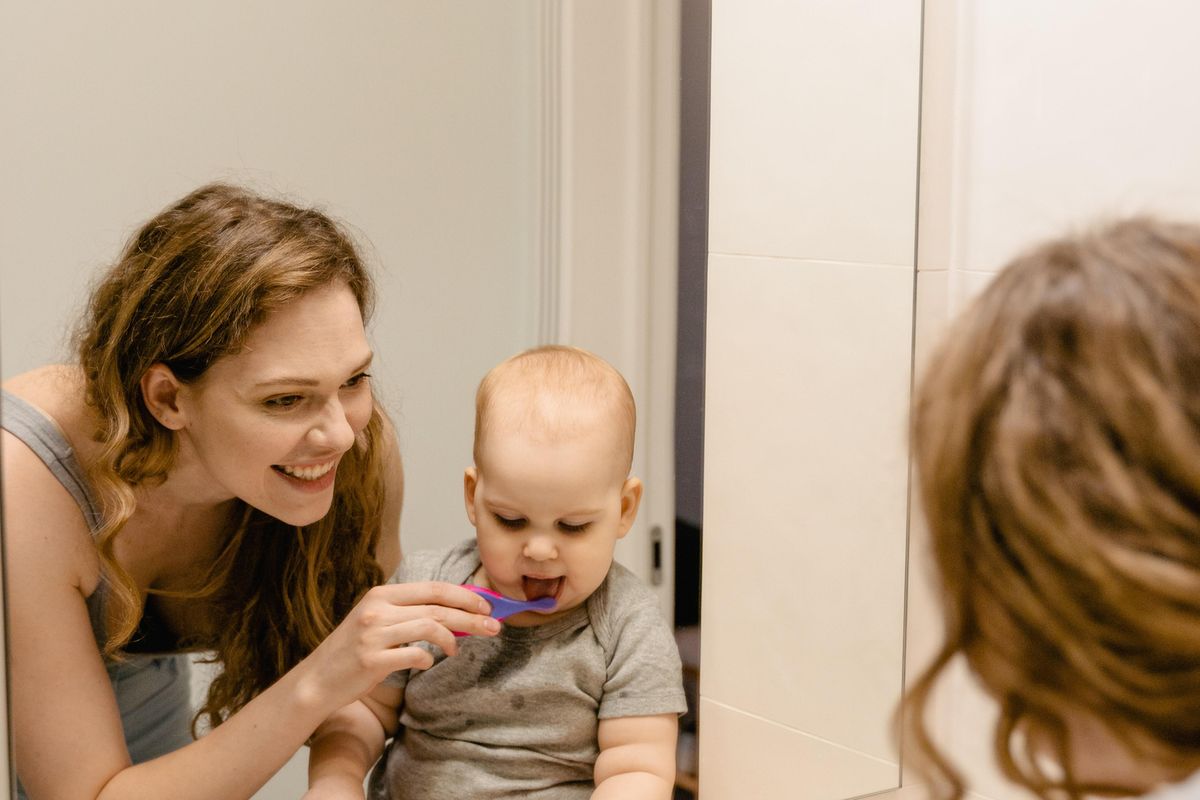By definition, baby teeth are temporary. However, just because they'll eventually be put under a pillow awaiting the tooth fairy doesn't mean that kids' dental health can go neglected.
Taking care of your child's gums and teeth helps to ensure that adult teeth will be in good shape when they come in, not to mention that starting a dental care regimen early will teach your child good habits to last a lifetime. Here are some guidelines to promote a lifelong healthy smile.
First things first
So just how early should dental care begin? Before baby teeth even start to peek through your child's gums. From birth, you should massage your baby's gums with a soft, clean cloth to clear the bacteria from the delicate tissue.
When your little one's teeth start to show, purchase a special baby toothbrush and infant toothpaste to clean the budding chompers. (You may also want to pick up some teething rings to ease the discomfort he or she may feel as the teeth come in.)
In addition, avoid giving your baby bottles of milk or juice at bedtime. While the treat may be soothing to your child, it can lead to tooth decay due to the sugars in these beverages. In fact, sucking on a bottle too long at any time of the day isn't great for dental health, so attempt to wean your child from the rubber nipple as soon as you feel it is appropriate.
Baby's first dentist
Taking your child to a pediatric dentist once teeth start to come in is an extra safeguard to be sure you're doing everything correctly, as well as to treat any orthodontic or jaw issues early on. Typically, these visits begin around a child's first birthday.
Around age 2, your child will be able to spit, so at this time you can start teaching good brushing habits. Continue showing him or her how to brush—using a pea-sized dollop of toothpaste and moving in gentle, circular motions from the gum line up—twice per day until about age 5 when good habits are formed. Even after your child is able to brush his or her own teeth, you might want to ask the dentist about sealants that prevent bacteria and sugars from causing cavities. Additionally, be sure to ask about fillings and fluoride treatments to keep decay at bay.
Making dental care fun
Small children learn best with visual and hands-on representations, so simply explaining about the harmful effects of sugar, bacteria and plaque may be ineffective. Instead, try some of these activities recommended by the American Dental Association to drive home the point of maintaining dental health.
- Poke a small hole into an otherwise pristine apple. The hole may be unnoticeable immediately, but check it again a day or two later. The hole is likely to become larger and brown, resembling a tooth cavity and showing kids just how quickly decay can occur.
- Have your child and his or her friends rinse their mouths with water dyed with food coloring, making sure they spit it out at the end. Give them all mirrors so they can see how the plaque along their gum lines and between their teeth suddenly shows, providing a visual for just how prevalent this decay-causing substance is in the mouth. Afterward, you can all practice flossing away the colored plaque, brushing and rinsing until those pearly whites show proudly.







